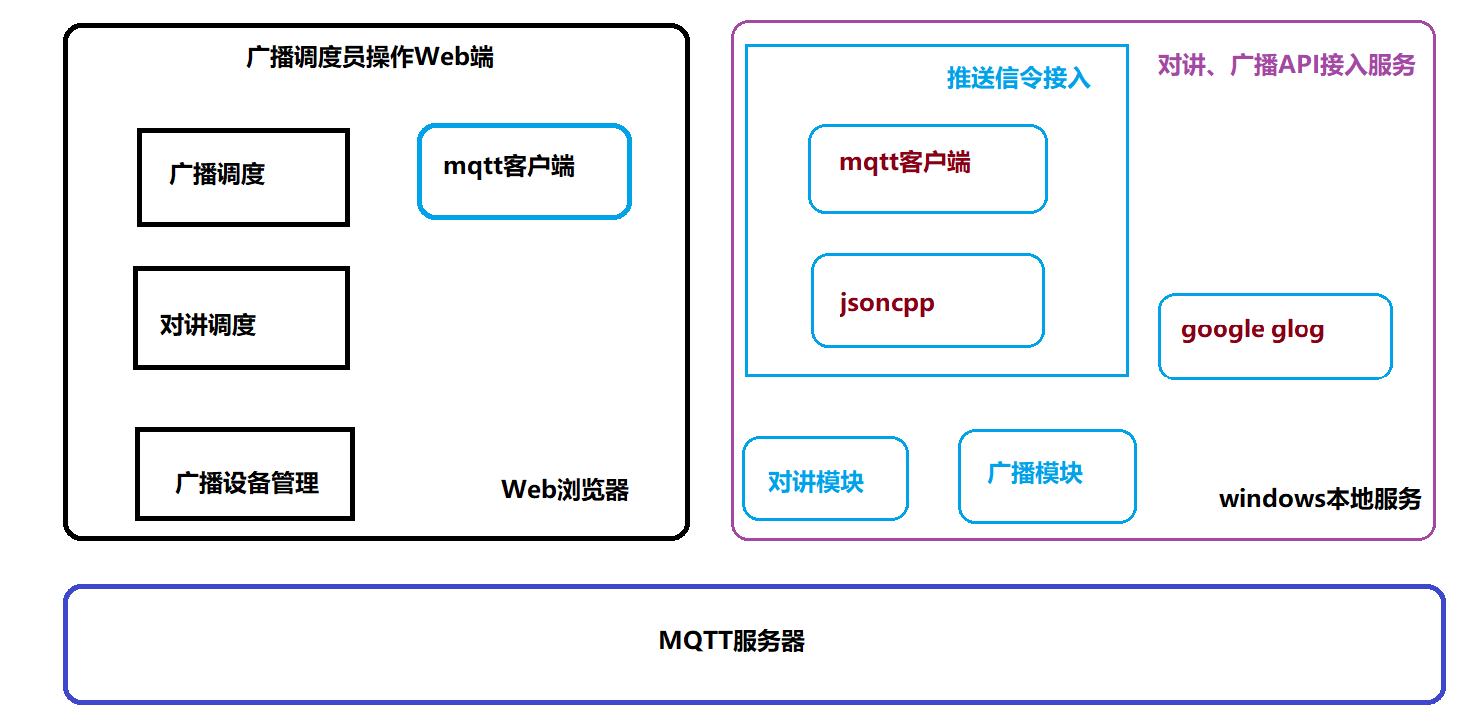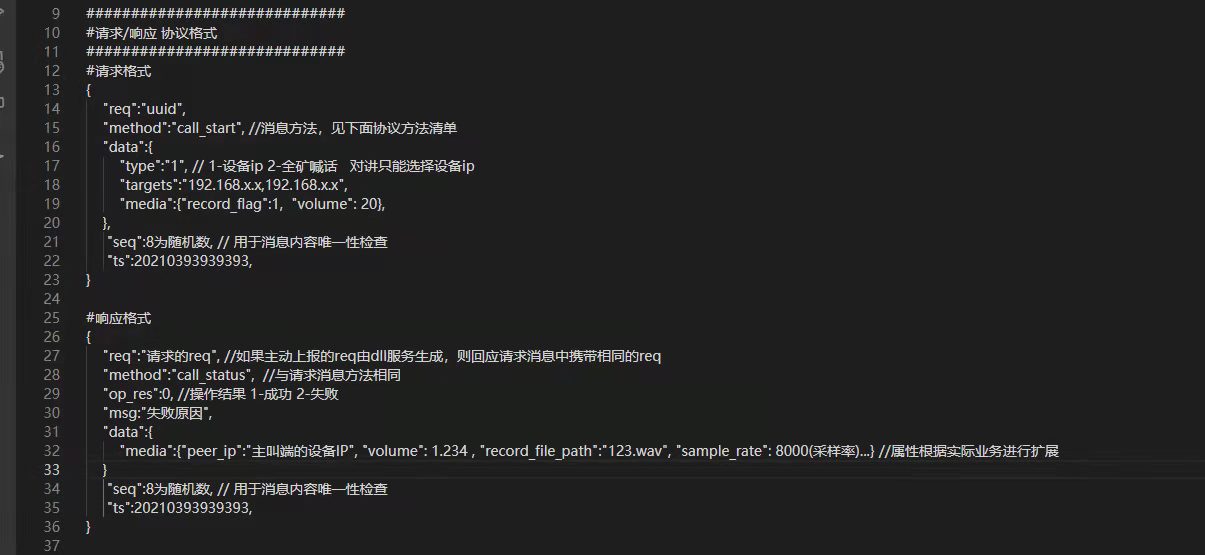一个比较典型的Web端如何集成C/S端程序的思路
需求:
一个三方的广播、对讲系统,需要集成到已有的平台,已有平台采用的是B/S架构,也就是用户通过Web端来实现管理需求;
三方的广播、对讲系统则是一个C/S架构的程序,提供三方可以定制开发的Windows端的SDK,这就有了这个积木式程序的开发!
框架图如下:最终是实现一个windows端的本地服务,安装在用户的PC电脑上,web端调度员使用web就能实现相同的C/S端程序的能力!

web端集成mqtt的客户端,接入MQTT服务器,然后通过推送给windows本地服务下发控制指令,比方开始广播、停止广播等指令!
windows本地服务接收到推送指令后,调用相应的功能模块提供的API,完成本地的功能调用,并将结果通过推送通知到web端!
mqtt推送指令中使用json作为消息体,传递控制和回应消息,请求格式和相应格式如下图:

麻雀虽小五脏俱全,集成了glog,方便后续问题定位和分析!
线程安全的队列:
//AsyncExecQueue.h
#pragma once
#include <stdio.h>
#include <string>
#include <iostream>
#include <atomic>
#include <mutex>
#include <queue>
#include "logutils.h"
using namespace std;
class MessageItem {
public:
MessageItem() {
m_topic = NULL;
m_content = NULL;
}
MessageItem(string &topic, string &content) {
m_topic = (char *)malloc(topic.length() + 1);
if (m_topic == NULL) {
LOGD("m_topic == NULL");
return;
}
memset(m_topic, 0x00, topic.length() + 1);
memcpy(m_topic, topic.c_str(), topic.length());
m_topic[topic.size()] = '\0';
m_content = (char*)malloc(content.size() + 1);
if (m_content == NULL) {
LOGD("m_topic == NULL");
return;
}
memset(m_content, 0x00, content.size() + 1);
memcpy(m_content, content.c_str(), content.size());
m_content[content.size()] = '\0';
LOGD("addr:%0x value:%s, size:%d, content:%0x, value:%s size:%d", m_topic, m_topic, topic.length(), m_content, m_content, content.size());
}
~MessageItem() {
if (m_topic) { free(m_topic);
m_topic = NULL;
}
if (m_content) {
free(m_content);
m_content = NULL;
}
}
char *m_topic;
char *m_content;
};
//自旋锁类
class SpinMutex
{
private:
atomic_flag flag = ATOMIC_FLAG_INIT;
public:
void lock()
{
while (flag.test_and_set(memory_order_acquire));
}
void unlock()
{
flag.clear(std::memory_order_release);
}
};
class AsyncExecQueue
{
private:
size_t maxsz;
mutable SpinMutex mutx;
queue<shared_ptr<MessageItem>> que;
AsyncExecQueue() {
this->maxsz = 0;
}
public:
//实现单例模式
static AsyncExecQueue* Instance() {
static AsyncExecQueue obj;
return &obj;
}
//任务对象出队
bool pop(shared_ptr<MessageItem>& item);
//任务对象入队
bool push(shared_ptr<MessageItem> item);
};
//AsyncExecQueue.cpp
#include "AsyncExecQueue.h"
//任务对象出队
bool AsyncExecQueue::pop(shared_ptr<MessageItem>& item) {
lock_guard<SpinMutex> lk(mutx);
if (que.empty()) return false;
item = que.front(); que.pop();
return true;
}
//任务对象入队
bool AsyncExecQueue::push(shared_ptr<MessageItem> item)
{
std::lock_guard<SpinMutex> lk(mutx);
if (maxsz > 0 && que.size() >= maxsz) return false;
que.push(item);
return true;
}-------------------广告线---------------
项目、合作,欢迎勾搭,邮箱:promall@qq.com
本文为呱牛笔记原创文章,转载无需和我联系,但请注明来自呱牛笔记 ,it3q.com
- 上一篇: 一个监控视频取流及Web端查看的框架思路
- 下一篇: 近期工作小结

请先登录后发表评论
- 最新评论
- 总共0条评论


